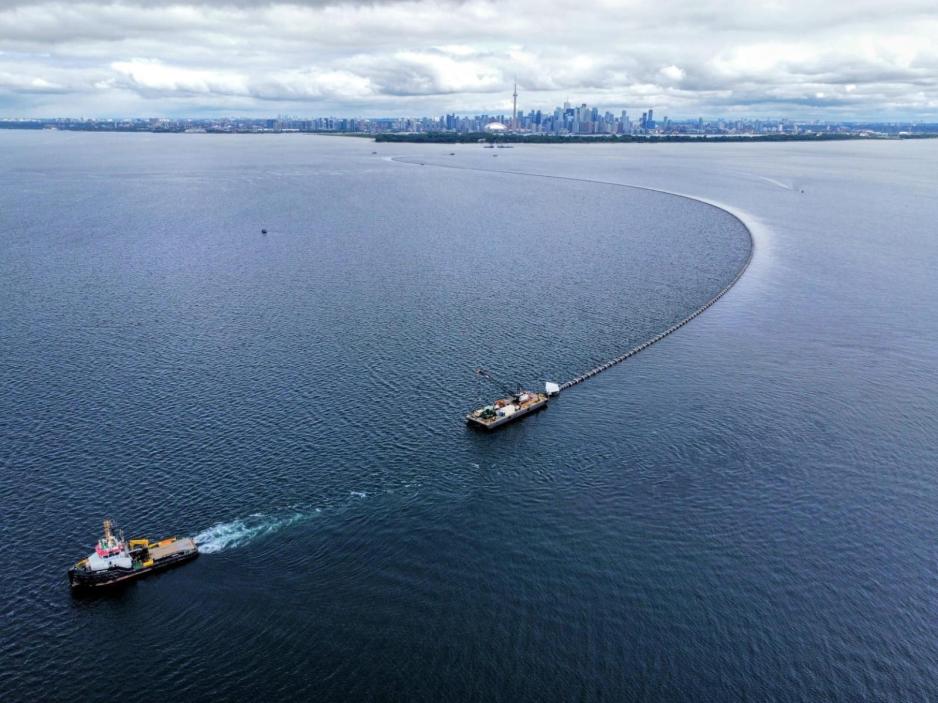George Brown College (GBC)’s Limberlost Place is tapping into one of the greenest energy projects on earth: a deep lake water cooling system that is unique to Toronto.
Owned and operated by Enwave Energy Corporation, the world-renowned system uses water from Lake Ontario to cool buildings across the city including such notable landmarks as Scotiabank Arena, The Fairmont Royal Hotel and Brookfield Place. With the addition of a new low-carbon heating facility and increased capacity to serve Toronto’s growing East Bayfront community, Limberlost Place will be the first mass-timber, net-zero building to be cooled and heated using Enwave’s system.
“Limberlost Place’s design and innovation including its passive energy features has helped to push the standard for new net-zero institutional developments in Toronto. It was a natural choice to leverage Enwave’s expansion and connect to a low-carbon heating and cooling system,” said Michelle McCollum, vice-president, Facilities and Sustainability, GBC.
How it works
In the simplest of terms, the process begins as water is pulled up from 85 metres through three intake pipes that stretch into the lake; water at this depth is a constant four degrees Celsius. A fourth intake pipe was recently added that extends three kilometres which has significantly increased capacity.
Next, the water is treated at the Toronto Island filtration plant before circulating throughout a 40-kilometre network of underground pipes, flowing into the interior system of any building that is hooked up. Once in, the chilled water can be used to meet that building’s individual cooling needs. Any unused water returns to the lake at approximately the same temperature it was taken out at.
Hot water recovery is now possible at the network’s Pearl Street Energy Centre with its heat recovery system bringing Enwave Green Heat to the district – one of the most advanced, and massive, heat pump systems in the world. This means buildings like Limberlost can meet hot water requirements through a low-carbon system.
“We are very excited about our partnership with George Brown and our collective ambition for a more sustainable future coming to life with Limberlost Place,” said Carlyle Coutinho, Enwave’s Chief Executive Officer. “Enwave has a long history in the City of Toronto with deep lake water cooling and paired with our recently launched Enwave Green Heat offering, we can provide a total energy solution that enables Limberlost Place to achieve its net-zero ambition. We appreciate being able to work with like-minded partners, like George Brown to achieve big things and create a model for others to follow.”
A neighbourhood system
Experts consider the deep-water system one of the most efficient and low-carbon alternatives to conventional heating and cooling systems. Called “district” or neighbourhood energy, this shared system allows buildings with different energy consumption needs to connect to a central energy source – in this case the water of Lake Ontario – rather than having to operate and maintain separate individual systems. This results in overall lower fuel consumption, costs and emissions. Heating and cooling continue to work even during a power outage because it does not rely on the electrical grid.
“Tapping into this shared energy system complements Limberlost’s other distinct passive energy features – the solar chimneys and panels, the window-to-wall ratios and dimmable lighting controls,” said Mary Livera Ranaweera, director, Sustainability, GBC. “It truly exemplifies how George Brown and our partners have strived to make the building a model of what is possible.”
Related external links:
- The world’s largest deep lake water cooling project just got bigger >>
(Note: A Globe and Mail subscription is required to access this article) - Imagine a furnace that heats the whole neighbourhood, not just your home >>

